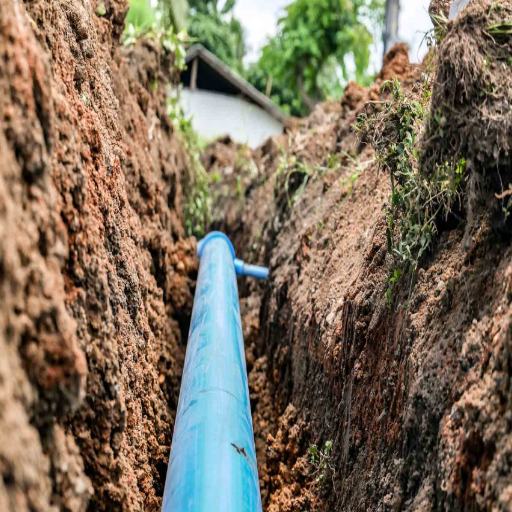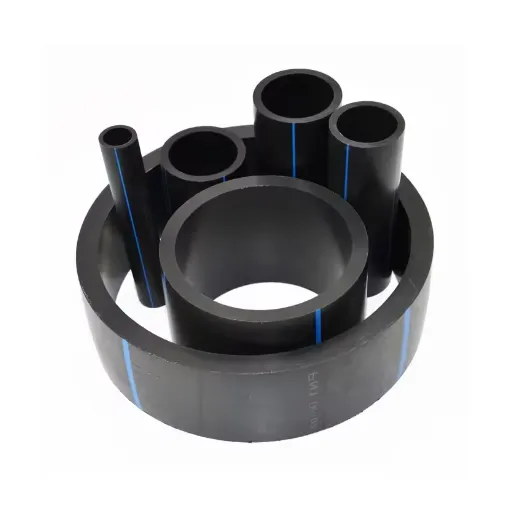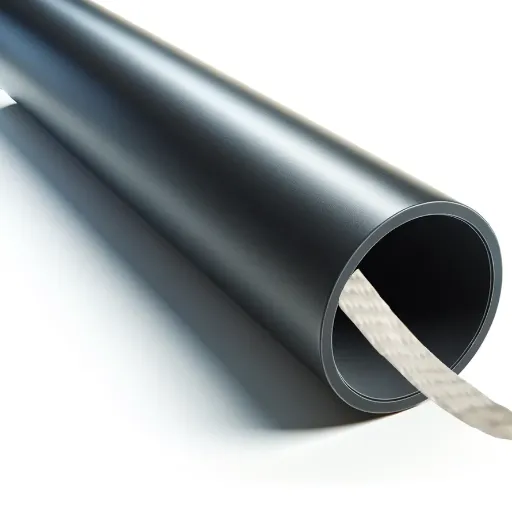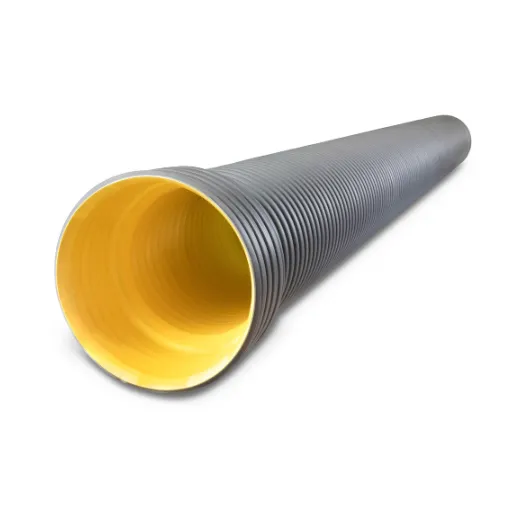Buried water lines are a critical component of modern infrastructure, ensuring the reliable delivery of clean water to homes, businesses, and communities. Despite their importance, these hidden systems are often overlooked—until something goes wrong. Understanding how buried water lines function, the process of their installation, and the necessary steps for proper maintenance is crucial for preventing costly repairs and disruptions. This article dives deep into the essentials of buried water lines, shedding light on their significance, detailing best practices for installation, and offering expert insights on effective maintenance strategies. Whether you’re a homeowner, contractor, or municipal planner, this guide will equip you with the knowledge to manage these vital systems with confidence.
How deep should I bury my water supply pipe?
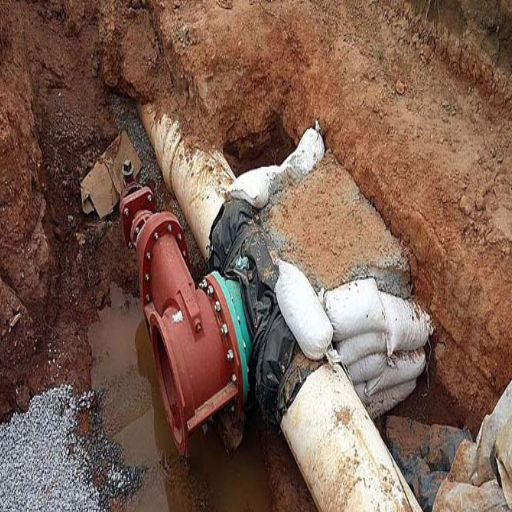
Recommended burial depths for different pipe materials
For the installation of water supply pipes, the depth to which they are buried will depend on the type of material used for the pipe as well as the local frost line or soil conditions. In most cases, care should be taken to always ensure the water supply pipes are buried underneath the frost line to ensure that they do not freeze.
- PVC (Polyvinyl Chloride): For PVC pipes, it is advisable to bury them at 12 to 18 inches for warmer regions. In colder regions, modifications will need to be made to ensure they are at least 6 inches below the frost line. While PVC is lightweight and resistant to corrosion, it is not able to cope with extreme temperatures as it will become brittle, meaning additional insulation is very likely to be needed.
- Copper: The average burial depth of copper pipes is 18 to 24 inches. This varies depending on the soil conditions. Copper is very durable, corrosion-resistant, and ideal for long-term use, but it does require a protective sleeve if buried in corrosive soil.
- HDPE (High-Density Polyethylene): Pipes made from HDPE require depths of 24 to 36 inches. These kinds of pipes are better suited for spanning great distances and deep installation due to their flexibility and the lack of seams which can be stressful points.
- Steel or Ductile Iron: The burial depth of these pipes is around 24 inches on the lower side and 30 on the upper side depending on the type of soil and its application. Because these materials are stronger, they can withstand things like heavy loads. Coatings are often put in place to combat corrosion over time.
When deciding on the right depth, always verify local construction regulations first and factor in elements such as soil type and frost depth.
Factors affecting water line burial depth
- Frost Line Depth: This measurement can be quantified at two depths, where frost line placement varies according to surrounding temperatures. More importantly, water lines need to be set deeper than these depths to avoid damage. In colder regions, for example, frost line depths can range between 36 inches to over 60 inches, which must be deepened when constructing water lines.
- Soil Conditions: The type of soil and the amount of compaction it undergoes greatly affect the depth at which an object must be buried. Sandy loose soils or highly expansive clay soils will shift, therefore increasing the risk of soil failure; hence, they will require deeper trenches. Soil tests are useful for determining the amount of compaction and load-bearing capacity, which is why contractors do them before settling on burial depths.
- Load-Bearing Capacity: To prevent damage surrounding frost line depth needs to be set deeper for water lines set in roads or industrial sites. In these inert areas, a measurement of 48-60 inches is preferred, but extra care should be taken for the pipe’s material strength.
- Pipe Material and Diameter: The effectiveness of a pipe’s function is largely dependent on the materials used, the construction of the pipe, as well as its overall size. For example, ductile iron pipes possess a unique composition and construction, that allows the pipes to be subjected to great amounts of force with minimal risk of bucking. This is opposed to the conditions surrounding plastic pipes that warrant a greater cover depth as compared to their iron counterparts.
- Local Regulations and Codes: National or state authorities usually have regulations that determine standard minimum burial depths for utilities, primarily based on safety, geography, and construction. Most statutes provide at least 30 centimeters of cover, but this can differ with particular regions.
It is now possible to decide the depth at which water utility lines may be buried so that the operational efficiency and life of those water devices under the water supply systems are provided.
What are the key features to look for in underground water pipes?
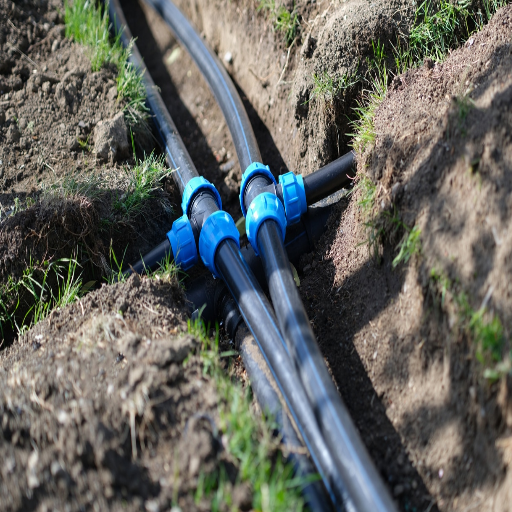
Corrosion resistance and durability in buried water lines
When dealing with buried water lines, attention to corrosion resistance and durability requires these specific materials to be capable of withstanding prolonged usage underground. Take for example PVC and HDPE. Both types of pipes are widely implemented because of their resistance to chemical and electrochemical corrosion. Furthermore, ductile iron pipes with appropriate protective coatings, such as zinc or epoxy, suffice in conditions that are hostile but require good mechanical strength and long service life.
- Corrosion Rate: Aim for a corrosion rate and rusting that is close to 0mm corrosion over the acidic and alkaline soils.
- Tensile Strength: To ensure durability, materials and devices should have high tensile strength, where HDPE has around 25-33 MPa, and ductile iron more than 400 MPa.
- Lifespan: Ideally, over fifty years in service with properly treated PE or coated iron materials.
- Hydrostatic Pressure Capacity: The place of use defines that pipes should meet limits of normal service, e.g. PN16 (16 bar) for many municipal systems.
By adhering to these standards and material specifications, performance and longevity under varying soil and moisture conditions can be reliably maintained.
Flexibility and pressure ratings for underground pipes
The flexibility and pressure standards of an underground pipe are the chief determinants to ensure the pipe can be used in a certain field. Flexibility denotes the basic capacity of the pipe to bend or adjust to changes in the surrounding soil conditions without cracking or breaking. This property is required in areas with unstable or shifting soil, where rigid pipes are bound to be damaged. Materials like HDPE or PVC to their flexibility, are widely used for underground water systems.
Pressure ratings, conversely, signify the maximum internal pressure under standardized conditions that the pipe can withstand before it may risk being damaged. This is generally expressed as being psi or by nominal pressure class. Engineers must ensure that the pipe selected can withstand working pressure as well as surge pressures due to changes in flow rates or abrupt closing of valves. PVC pipes can generally provide pressure ratings between 150 and 300 psi, depending on the thickness and diameter of the pipe, whereas HDPE pipes are favored for offering better impact resistance and pressure stress handling capabilities.
Through computations and tests done in the field, the selection of pipe materials has been updated and can achieve a good balance between flexibility and pressure resistance. Factors such as soil types, load-bearing requirements, and operational conditions must be assessed to optimize the material choice. The most recent innovations also offer composite materials with optimized flexibility and pressure values, which should, in turn, promise greater durability and long-term performance in demanding environments.
How do I properly install an underground water line?
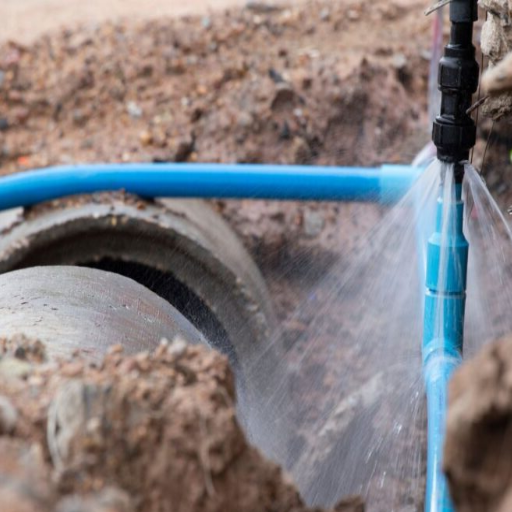
Trench preparation and bedding for buried water pipes
To excavate and prepare a trench that can sustain a pipe drain, I would take a systematic approach while observing the technical specifications to promote its durability and functionality. Firstly, I would excavate the pipe trench to the minimum required depth. The depth should be dictated by the frost line within the region, which for most places would be somewhere between 12-18 inches below the frost line. In addition, the trench width should be sufficient to permit the encasement and compaction of the bedding material, which would be approximately 6-12 inches wider than the diameter of the pipe on each side of it.
I would then ensure that the trench base is stable and uniform devoid of sharp rocks or debris that could risk compromising the integrity of the pipe. Thereafter, substrate materials including sand or fine gravel would be placed at a level 4-6 inches below the trench to create a level footing. In addition, the bedding material should conform to various specifications such as ASTM C33 for fine aggregate to make certain that the appropriate gradation and quality are obtained.
While installing a pipe, it should be uniformly supported in the absence of any gaps or pressure points. Compaction should be done in layers to prevent settlement. I would backfill the trench with extra bedding material around the pipe so that it is fully encased to a height of 6 to 12 inches above the pipe crown. Ultimately, the rest of the trench could be filled with acceptable backfill material, compacted in lifts, and then graded to ensure no surface water infiltration occurs while the integrity of the buried piping system is preserved.
This procedure should prevent surface penetration of water which would undermine the structural integrity of the buried piping system. Following this procedure would ensure compliance with established standards as well as the long-term reliability of the water line.
Connecting fittings and preventing leaks in underground pipes
Achieving reliable connections and preventing leakage of underground pipes requires a systematic approach that conforms to technical standards. It is a good practice to first determine materials for fittings. Fittings often depend on the pipe material, its diameter, or the system’s operating pressure. As an example, PVC pipes may use solvent weld fittings, whereas metal pipes typically use threaded or flanged fittings. Make certain the fittings’ rating for the pipe’s diameter and expected temperature and pressure conditions, generally given as PSI for pressure and °F for temperature, is adequate.
During the installation phase, pipe ends should be cleaned and deburred to remove any irregularities that may hinder the seal, as well as to prevent the seal from being compromised. Additionally, when doing solvent28 welding, primer and solvent cement should be used uniformly and according to the manufacturer’s instructions. In the case of threaded fittings, threads should be thoroughly cleaned and thread sealant tape or joint compounds appropriate for the pipe’s material should be applied. Bolted flanges require a uniform torque to be placed on each bolt in a star formation to avoid warping while ensuring proper sealing.
Identifying and mitigating potential leaks is made easier when applying pressure tests on the system after the installation. Hydrostatic pressure testing is a common method of testing where the system is pressurized with water up to one and a half times its maximum operating pressure. Another method that can be performed under controlled conditions is pneumatic testing. Whether performing hydrostatic or pneumatic testing, careful steps must be taken to guarantee that the connections are leak-free and the underground piping system is structurally sound.
What are the advantages of using PEX pipes for buried water supply?
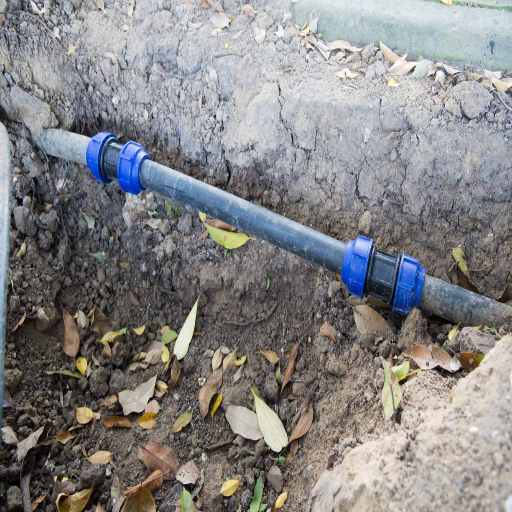
Flexibility and ease of installation of PEX in underground applications
PEX pipes prevail outstanding benefits for underground water supply systems concerning installation and flexibility. Its flexibility permits long, continuous runs of piping without the need for excess fittings or joints which reduces the risk of leaks. Depending on the manufacturer, PEX can bend to a minimum curvature radius of 6 to 8 times its outside diameter. Furthermore, PEX has the additional benefits of being lightweight, making it easier to handle on-site, in addition to being compatible with several other connection methods like crimp, clamp, or push-fit fittings. Being able to slightly expand under freezing conditions without cracking makes it more durable than materials such as PVC or copper. The capability to operate at temperatures of 200°F for short bursts and 180°F for extended use while maintaining 100psi of pressure makes it suitable for cold and hot water supply systems that are buried.
Regarding ease of installation and movement around obstacles, the flexibility of PEX pipes single-handedly reduces the risk of trench excavation. PEX can bend like no other and can navigate perfectly while ensuring that the joints and pipes remain intact. PEX pipes are plugs of the future, and the supports for these pipes operate smoothly without excess clamping joints that other pipes such as copper require. The installation of plasterboards is flexible and does not require obstruction towards the movement of the joints. If your construction project involves areas occupied by heavy electrical devices or transformers, PEX is recommended. Such equipment is sensitive to low temperatures and surface cracks. PEX pipes are ideal for these situations.
Moreover, like any other piping system, its assembly needs proper tools; however, the required tools for PEX Piping Systems are very few in comparison to rigid piping systems. This saves time and money while ensuring plumbing standards are met. These benefits make PEX one of the most efficient and dependable solutions for below-ground water supply systems.
Long-term durability and cost-effectiveness of buried PEX pipes
Cross-linked polyethylene (PEX) pipes find extensive usage in buried installations owing to the set of properties that increase their longevity and economic feasibility. Its inherent flexibility and ability to resist thermal expansion reduce cracking under temperature variations, a property needed for underground settings exposed to fluctuating ambient conditions. Studies show PEX pipes can last beyond 50 years if installed and maintained under proper conditions, emphasizing their place as a highly durable solution.
From a cost-benefit point of view, PEX pipes also grant cost savings. Their lightweight structure and flexibility enable minimal handling and simple fittings, thus reducing installation time and consequently installation cost. Besides, the accumulation of chemically active matter and mineral buildup in PEX is minimal, lowering the chances of pipeline blockages that require maintenance over Estimates have shown that compared with copper or PVC, the higher durability of PEX and minimum maintenance cost imply greater lifecycle cost savings.
With the advent of recent extrusion technology and white material science, the performance indices of PEX pipes have been improved much further. From the standpoint of practicality, pipes produced by these advanced methods have superior pressure endurance and thermal stability. Hence, their performance will be ensured even under very stringent conditions. Engineering data suggest that PEX pipes have since appeared to be resisting oxidative degradation and stress cracking, factors being quite critical in subsurface environments. This makes PEX pipes a good investment for long-term infrastructure projects due to the synergy of technical strength with realistic economic benefits.
What maintenance is required for buried water lines?
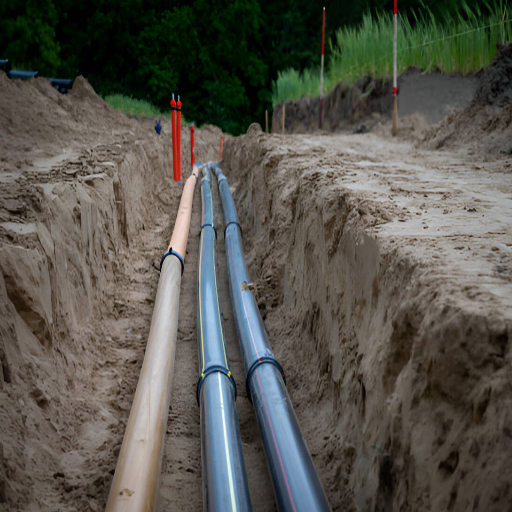
Detecting and repairing leaks in underground water pipes
Efficient detection and repair of underground water pipe leaks can help to save both time and resources, thus, a systematic approach is the key. Leakage detection starts with examining surface indicators, which could be signs of unexpected puddles, high water usage, or even lower-than-normal water pressure. Sophisticated detection methods include the aid of sound sensors, tracer gas, or ground-penetrating radar (GPR) to determine the specific location of a leak.
After a leak is found, the next steps usually involve excavating to reveal the damaged section of the pipe. The PEX piping systems must also account for the fitting’s ability to withstand thermal expansion, pressure ratings of 73°F (23°C) and 160 psi (1103 kPa), and installation of replacement sections due to the flexibility and resilience of PEX pipes. Repairs can be done by replacing the damaged section, or depending on the extent of the damage, utilizing specialized repair clamps and couplings.
Checking the pipe structure material for its climactic ranges of -40°F to 200°F (-40°C to 93°C) helps to enforce preventative measures during repairs. System water loss can swiftly be detected and repaired to preserve efficiency ensure system durability and reduce maintenance over longer periods.
Protecting buried water lines from root intrusion and damage
Root intrusion is among the most common causes of damage to buried water lines, especially in areas dotted with trees or large shrubs. Roots tend to grow toward water and nutrients; hence, a mere crack or a joint in the pipe may serve as an entry point. Roots becoming trapped inside can expand, blocking water flow and causing pipe bursts, leaks, or contamination issues. Prevention is always better, and this minimization of risk should begin at installation, followed by proper maintenance and close periodic analysis.
Root barriers are a good option to protect buried water lines. These barriers are installed alongside pipes and are made from materials such as plastic or reinforced geotextiles that physically prevent roots from reaching the water line. There are chemical barriers as well; these have slow-release chemicals that repel roots from the pipe. Using such barriers during pipe installation provides an active defense against root intrusion. Also, choosing pipe materials resistant to cracking, such as high-density polyethylene (HDPE) or cross-linked polyethylene (PEX), will reduce the number of initial points that roots can exploit.
Prevention is the best root damage control, and therefore, considerations of placement, inspection, and maintenance play a major role. Water mains should ideally be routed away from large mature trees or densely rooted vegetation. If that is not possible, regular inspection by way of acoustic sensors or fiber optic monitoring will help reveal blockages or minor breaches before they open into full-blown problems. Furthering proactive planning is possible through the use of GIS and predictive modeling in pinpointing areas likely to suffer from root intrusion. Intelligently planned systems with durable materials and an operational monitoring routine remain the foundation for assuring, in the long run, the provision of water infrastructure services with minimum repair and disruption costs.
Reference sources
Frequently Asked Questions (FAQs)
Q: What is HDPE pipe and why is it suitable for underground water supply?
A: HDPE (High-Density Polyethylene) pipe is a durable and flexible plastic pipe that’s ideal for underground water supply lines. It’s resistant to corrosion, chemicals, and abrasion, making it suitable for underground use. HDPE pipe features include long-term strength, flexibility, and leak-free joints, making it an excellent solution to your problem of choosing the right type of pipe for underground water systems.
Q: How deep should water supply lines be buried?
A: Generally, water supply lines should be buried at least 4 feet deep to protect them from freezing and physical damage. However, the exact depth may vary depending on your local climate and building codes. In colder regions, pipes may need to be buried 6 feet underground or deeper to prevent freezing.
Q: What are the advantages of HDPE pipe installation for underground water supply?
A: HDPE pipe installation offers several benefits for underground water supply: it’s flexible, allowing for easier installation around obstacles; it has a long lifespan of up to 100 years; it maintains water quality better than some metal pipes; and it can often be installed using trenchless pipe installation methods, which minimizes disruption to the surrounding area.
Q: Can PEX tubing be used for underground water supply?
A: Yes, PEX (Cross-linked Polyethylene) tubing can be used for underground water supply in certain situations. It’s flexible, resistant to freezing, and easy to install. However, it’s generally recommended for shorter runs and may require additional protection when used underground. When deciding between HDPE pipe or PEX for your underground water lines, consider factors such as the length of the run, soil conditions, and local building codes.
Q: What is the difference between the actual outside diameter and the actual inside diameter in pipe selection?
A: The actual outside diameter (OD) is the measured exterior dimension of the pipe, while the actual inside diameter (ID) is the internal dimension through which water flows. Both measurements are important when selecting pipes for underground water supply. The OD is crucial for fitting connections and calculating trench width, while the ID affects water flow capacity. HDPE pipes are often sized by their OD, so it’s important to consider both dimensions when planning your installation.
Q: Are there alternatives to HDPE pipes for underground water supply?
A: Yes, there are alternatives to HDPE pipes for underground water supply. These include PVC (Polyvinyl Chloride), copper, and galvanized steel pipes. Each has its own set of features and benefits. PVC is lightweight and corrosion-resistant but may not be as durable as HDPE. Copper is long-lasting and naturally antimicrobial but can be expensive. Galvanized steel is strong but may corrode over time. The right type of pipe depends on your specific needs, soil conditions, and local regulations.
Q: What should I consider when planning trenchless pipe installation for my underground water supply?
A: When planning trenchless pipe installation for underground water supply, consider the following: soil conditions, existing utilities, pipe diameter, installation length, and equipment access. Trenchless methods like horizontal directional drilling or pipe bursting can be less disruptive and more cost-effective for installing HDPE pipes. However, they require specialized equipment and expertise. Always consult with a professional to determine if trenchless installation is suitable for your specific project.
Q: How do I maintain the water quality in my underground supply lines?
A: To maintain water quality in underground supply lines, consider these steps: use high-quality pipes like HDPE that don’t leach contaminants; ensure proper installation to prevent contamination; install appropriate valves and cleanouts for maintenance; regularly inspect and maintain your system; and consider adding filtration if necessary. HDPE pipes are particularly good at maintaining water quality due to their smooth interior surface, which inhibits bacterial growth and mineral buildup.



